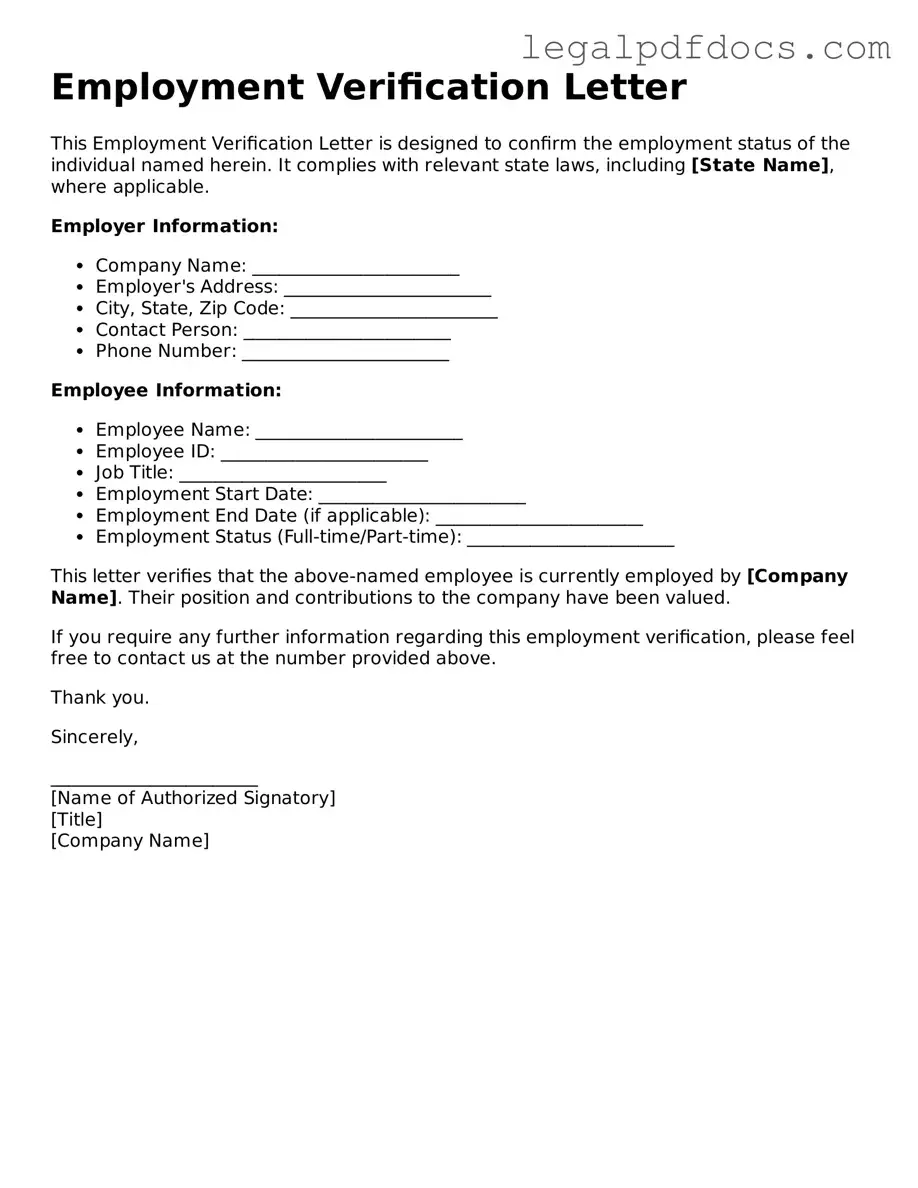Employment Verification Template
The Employment Verification form is a document used by employers to confirm an individual's employment status and history. This form serves as a crucial tool for verifying job applicants' claims regarding their previous work experience. To ensure accurate and efficient processing, it is important to complete the form correctly; start by filling it out using the button below.
Open Employment Verification Editor Here
